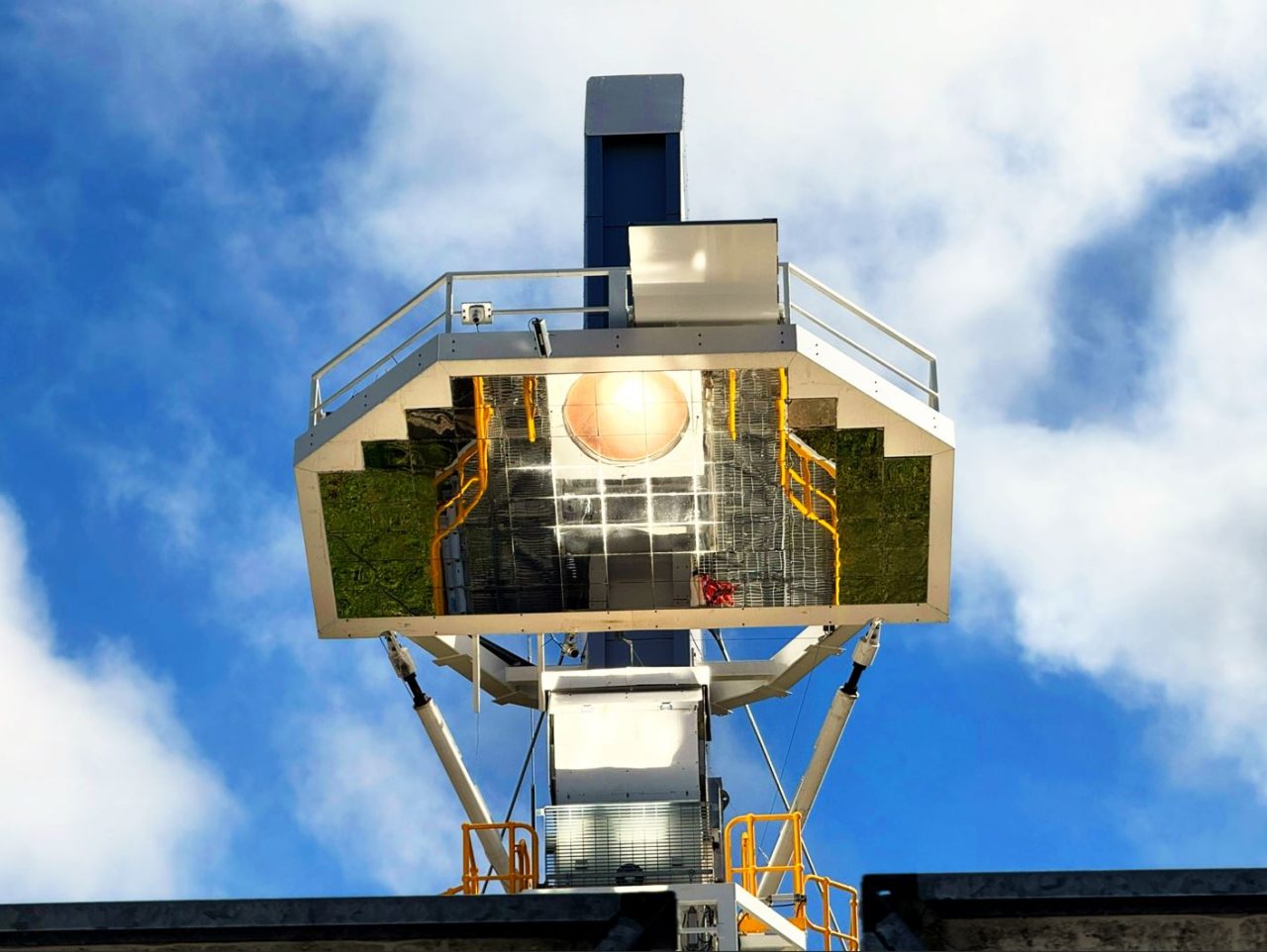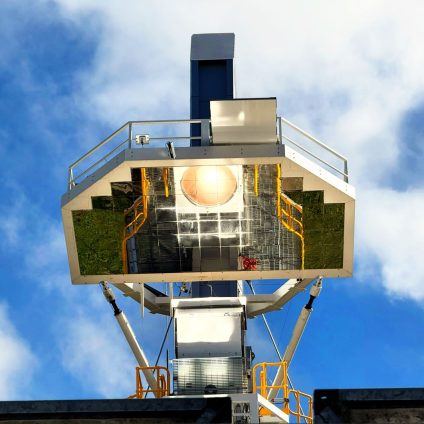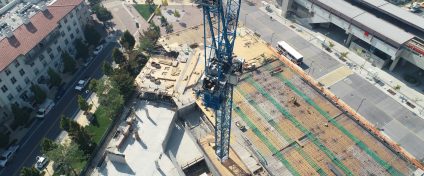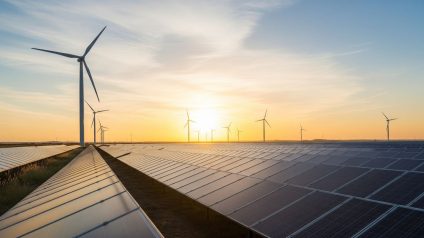The efficiency of thermochemical hydrogen production has increased thanks to CSIRO’s new beam-down solar reactor.

Beam-down solar reactor boosts hydrogen production efficiency in Australia
The new tool for decarbonizing heavy industry is literally looking down. At the Newcastle Energy Centre of the CSIRO (Commonwealth Scientific and Industrial Research Organisation), about 90 miles north of Sydney, a team of scientists has developed a beam-down solar reactor that could transform thermochemical hydrogen production.
What is beam-down technology?
The concept is rooted in a well-known energy principle: concentrating solar light to generate high-temperature thermal energy for industrial use. It’s the same foundation behind solar thermal power plants, and this new design builds on it.
The system uses a field of mirrors, or heliostats, to reflect sunlight toward the top of a central tower. But unlike traditional setups, here the concentrated light is redirected downward, hence “beam-down.” The light then reaches a reactor or a heat-transfer fluid located at ground level, as is the case with CSIRO’s system.
The idea itself isn’t new. It draws from the Cassegrain reflector concept, originally developed for telescopes. But in recent years, the beam-down configuration has been gaining traction in solar concentration applications.
This design offers multiple advantages. By concentrating sunlight near the ground, it improves thermal fluid stability, since the fluid circulates closer to the ground rather than traveling up and down a tower. That results in higher system safety and lower pumping energy requirements, which translates to lower operational costs. The overall structure is also more compact, reducing installation and maintenance costs.
Beam-down systems today are used in both solar thermal power generation and hydrogen production. In the latter, the system includes a thermochemical water-splitting reactor at its base.
The first beam-down solar reactor using doped ceria
The Australian system builds on this architecture to develop the country’s first beam-down demonstration plant. It also introduces an innovation developed at Japan’s Niigata University: doped ceria particles.
To understand the role of doped ceria, it’s important to look at how thermochemical water splitting works. This process uses a two-step redox reaction to dissociate water. First, a redox-active metal oxide (MO) is reduced, then it’s reoxidized by reacting with steam, pulling oxygen from the vapor and releasing hydrogen gas.
In this case, the chosen metal oxide is doped ceria, a modified version of cerium oxide that enhances its ability to absorb and release oxygen at significantly lower temperatures. This is the first time doped ceria particles have been used in a demonstration-scale test.
Professor Tatsuya Kodama of Niigata University, who collaborates with CSIRO, explained:
“This method allows us to produce over three times more hydrogen than typical materials under similar conditions. We also gained valuable insights on how to further optimize the particles and improve the entire process.”
High-efficiency solar hydrogen production
The new beam-down solar reactor successfully demonstrated the complete thermochemical hydrogen production cycle, from solar input to hydrogen output, reaching a solar-to-hydrogen efficiency of over 20%.
Dr. Jin-Soo Kim, lead researcher at CSIRO and project manager, said the design offers both performance and simplicity.
“We haven’t reached industrial scale yet, but we’ve shown strong reactivity under relatively mild conditions. With further improvements, this could match electrolysis in both efficiency and cost.”












